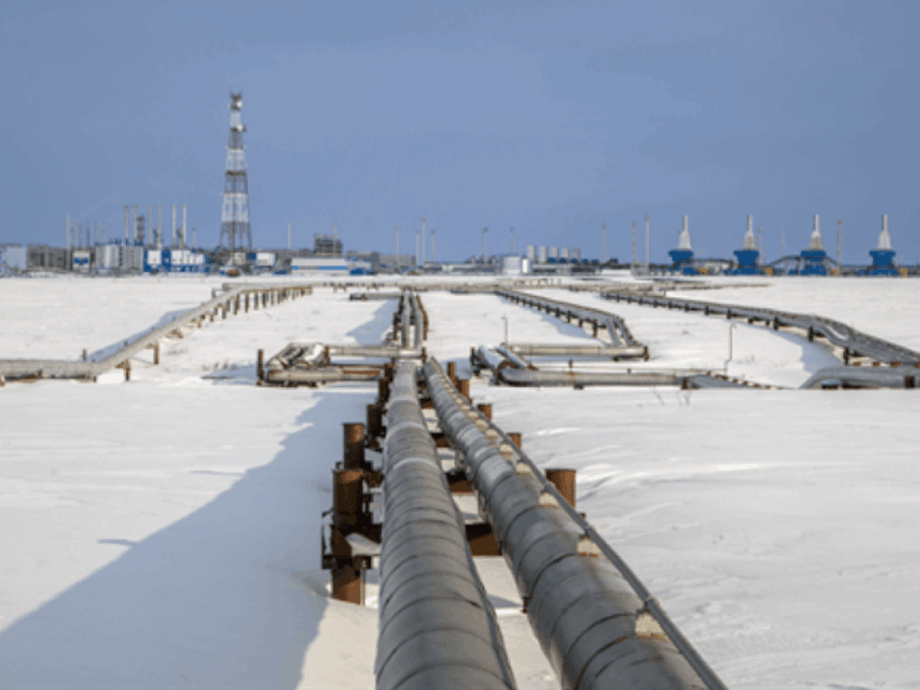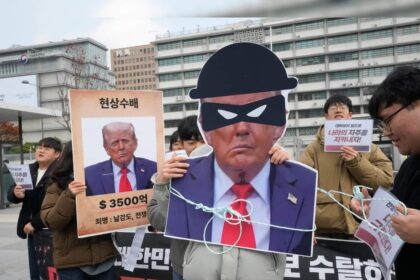Why the pipeline matters now
Russia and China have announced a new step toward building a natural gas link that could redraw parts of the global energy map. The Power of Siberia 2 project, often shortened to PoS2, would send up to 50 billion cubic meters of gas each year from Russian fields to northern China through Mongolia. Gazprom, Russia’s state owned gas giant, called the memorandum to construct the line legally binding and said the design life is 30 years. China has not published matching details, and the two sides still need to finalize pricing, financing, and construction schedules. Even so, the signal is clear. Moscow wants to push its stranded west Siberian gas east after Europe slashed purchases following the 2022 invasion of Ukraine. Beijing is willing to consider more Russian pipeline gas, likely at a discount, on terms that suit its broader strategy.
The headline numbers are large. If PoS2 becomes operational around the early 2030s, Russian pipeline deliveries to China could exceed 100 bcm a year when combined with the existing Power of Siberia line and the Far East route. That would equal more than one fifth of China’s projected gas demand for that period. The pipeline would divert gas that once fed Europe, which imported as much as 180 bcm a year before the war. Today European imports of Russian pipeline gas are a fraction of that peak. A second Russia to China line would mark a durable energy pivot by Moscow and a new era of gas trade centered on Asia.
This prospective shift carries political weight. Western governments have tried to choke off Kremlin energy revenue to limit Moscow’s war capacity. A new long life pipeline to China would soften that pressure by giving Russia a steady outlet. The deal also arrives as Chinese buyers accept cargoes from the sanctioned Arctic LNG 2 project, a direct challenge to United States sanctions enforcement. For Beijing, pipeline gas secured on favorable terms offers energy security and bargaining power in the liquefied natural gas market. For Washington and its partners, the project raises the risk that sanctions lose bite while reshaping global LNG flows.
What the project would build
PoS2 is designed to move Yamal Peninsula gas across Russia and Mongolia into northern China. Mongolia would serve as the transit corridor, a route that Beijing previously viewed with caution but now appears ready to accept. Capacity is slated at 50 bcm a year, a volume close to Nord Stream 1’s pre war level into Germany. Gazprom executives have floated a possible first delivery around 2030, though that timeline depends on a final commercial agreement, construction mobilization, and Chinese approval of downstream connections inside China.
The new line would sit alongside Power of Siberia 1, which began supplying gas to northeastern China in late 2019 and is ramping toward 38 bcm a year, with an agreed increase to 44 bcm. Russia has also advanced a Far East route to China’s northeast coast. Together these links would lift Russia’s sales in China to levels that rival Russia’s pre war pipeline exports to individual European countries, though the overall tonnage would still trail what Gazprom once sold to the entire European Union. The key difference is price and profitability. European sales historically yielded higher returns. Delivering gas to China over long distances, with new transit and internal Chinese pipeline costs, will likely produce lower netbacks for Moscow.
How it fits with existing supply
China buys gas from a wide range of sources. It imports pipeline gas from Central Asia, especially Turkmenistan, and from Myanmar. It is also the top global LNG buyer, taking cargoes from Qatar, Australia, and other producers, while domestic production has been rising at a fast pace as state firms drill new fields and enhance recovery. In 2024 China’s domestic gas output exceeded 240 bcm and LNG imports hit high levels, with pipeline imports also sizable. Beijing’s policy is to balance LNG, pipeline gas, domestic output, coal, and non fossil sources to keep costs in check and reduce vulnerability to any single supplier.
A land route through Mongolia would reduce exposure to maritime choke points such as the Strait of Malacca, where LNG cargoes pass through crowded waters and face shipping risks. A land based line can deliver steady baseload volumes for city heating and industry in northern China, where winter demand spikes. That said, LNG offers a flexible supplement during cold snaps, while domestic production and coal remain important for energy security. PoS2 would add another option to China’s already diverse mix rather than replace other sources outright.
Who has the bargaining power
Pricing is the heart of the negotiation. Russian leaders have pushed for this pipeline for years, especially after European sales collapsed. China has been in no hurry. Buyers in Beijing have many alternatives, from long term LNG contracts to Central Asian pipelines and rising domestic supply. This gives China leverage to hold out for lower prices and more flexible terms. Reports during the talks indicated that China sought prices near Russia’s domestic level, which are subsidized, and preferred the ability to take less than full capacity if demand softens. Russian officials want firm take or pay commitments that underpin the capital cost.
The risk for Moscow is concentration. A single giant buyer can use market power in price reviews and volume scheduling. The risk for Beijing is lock in. A fixed pipeline contract runs for decades and may outlast China’s peak gas demand if efficiency, renewables, nuclear, and storage rise faster than expected. An added wrinkle involves the currency of payment. Gazprom executives said current transactions are split between renminbi and rubles. If PoS2 follows that model, it would advance energy trade outside the dollar system. That would help both countries manage sanctions exposure but could still entangle Chinese banks and firms in financial penalties if Washington extends secondary sanctions.
China also cares about optionality inside its own market. Northern demand is highly seasonal. Industrial growth is slowing in some regions, and several coastal provinces can switch among gas, coal, and renewables based on price. Chinese negotiators will likely seek flexibility on seasonal flows and the right to resell LNG cargoes when prices make that attractive. Russia wants steady year round off take to maximize pipeline utilization. That core tension will shape the final contract.
Sanctions flashpoint and global reactions
Western governments are trying to curb Russian energy revenue, which funded a large share of Moscow’s budget before the war. The United States has sanctioned the Arctic LNG 2 project and some Russian tankers and logistics networks. Officials in Washington have also discussed urging Group of Seven partners to impose sweeping tariffs on Chinese and Indian purchases of Russian oil. Europe has pledged to quit Russian pipeline gas by 2027 and has replaced most flows with LNG from the United States, Qatar, and others. A new Russian pipeline to China could sustain Moscow’s income even as Europe disengages.
China’s recent acceptance of Arctic LNG 2 cargoes underscored this friction. Deliveries by a renamed and reflagged tanker fleet tested how far sanctions enforcement will go. For Beijing, energy security takes priority, and discounted Russian supply is attractive. For Washington and European capitals, those purchases erode pressure on the Kremlin. The messaging around PoS2 adds to the test. A memorandum without a final price can still be a political signal that Moscow and Beijing are moving closer in energy trade despite Western pressure.
Guo Jiakun, a spokesperson for China’s Foreign Ministry, framed Beijing’s stance squarely in terms of national interests.
“China will take energy supply measures that are right for China based on national interests and will firmly safeguard its own sovereignty, security, and development interests.”
Ukrainian President Volodymyr Zelensky pressed buyers to avoid Russian energy entirely in order to shrink Moscow’s war chest.
“Buying any kind of energy from Russia should stop if the goal is to halt Russian aggression.”
Policymakers now face choices with tradeoffs. Tariffs or secondary sanctions on buyers of Russian energy could target revenue, yet expansive measures would raise input costs for Asian economies and risk blowback. China has so far avoided penalties for buying Russian fuels, though some Chinese firms and banks have faced sanctions for transactions linked to Russia. The PoS2 deal sits at the center of these tensions.
Beyond the headline risk of sanctions, the currency of trade is another flashpoint. If future gas sales are settled mostly in renminbi and rubles, the share of dollar invoicing in global energy could slip. That would matter for sanctions reach, for the cost of hedging, and for how international banks manage compliance risk.
What it means for LNG trade
The pipeline would reshape the LNG market in the 2030s. If China locks in up to 50 bcm of low cost pipeline gas, its appetite for extra LNG cargoes could ease in average years. China already holds a large portfolio of long term LNG contracts and has re exported cargoes when domestic demand was soft. With more pipeline supply, Chinese firms could become even more active traders, reselling surplus cargoes into Europe or South Asia and acting as swing suppliers when prices are favorable.
For United States exporters, this is a warning sign. Before the latest trade frictions, Chinese buyers signed multiple long term deals with US projects. Those volumes could have raised the US share of China’s LNG imports toward the end of the decade. Tariffs and political tension have since chilled that flow. If PoS2 proceeds, new US LNG projects might face a harder road to a final investment decision because one of the largest potential buyers would need fewer spot cargoes and might delay new purchases. Existing US terminals would still ship to Europe and Latin America, but an incremental pillar of demand in North Asia would be less certain.
Qatar is also exposed. It is expanding capacity at North Field East and North Field South, with a large tranche of supply seeking homes in the late 2020s and early 2030s. Chinese buyers already take a large share of Qatari LNG. If Russian pipeline volumes displace some of that growth, Doha may need to accept softer pricing or look harder at Europe and South Asia. More global supply, plus slack in Chinese demand in some years, could tilt the market toward buyers and create more competition for LNG projects with higher costs.
Price dynamics will still swing with weather and geopolitics. If spot LNG remains under roughly 12 dollars per million British thermal units in winter, Chinese utilities may favor cargoes to balance peak demand. If prices spike, pipeline gas on fixed formulas and domestic output will play a larger role. PoS2 enhances China’s ability to move among these options, which strengthens its hand in price talks.
Mongolia’s role and regional calculus
Routing through Mongolia brings both advantages and risks. The corridor offers a direct land path into northern China, which reduces maritime exposure and avoids congested sea lanes. For Ulaanbaatar, hosting transit infrastructure promises investment, construction jobs, and steady transit fee income. A project of this size could lift growth and modernize parts of the energy grid.
Mongolia also follows a Third Neighbor policy, cultivating ties with partners beyond Russia and China, including democratic countries and international institutions. That approach could expose the project to political cross currents. Western partners may press Mongolia on governance standards, environmental safeguards, or sanctions compliance. Negotiators reportedly included a fallback clause that could allow rerouting through Kazakhstan if major problems emerge in Mongolia. Including such a clause reduces geopolitical risk for Beijing and Moscow but does not eliminate local and regulatory challenges. Security along the route, especially across long stretches of steppe and border areas, will require investment and coordination.
Climate and long term demand
China’s energy transition is gathering speed. Wind and solar additions have been rapid, battery storage is scaling, and nuclear units continue to come online. Beijing has pledged to peak carbon emissions before 2030. Gas can displace coal in heating and industry, which reduces local air pollution and carbon intensity, but total gas demand growth is uncertain. In several scenarios, gas demand peaks in the 2030s and slowly declines as electrification spreads and clean power grows.
That outlook shapes the pipeline debate. A large new pipeline is a multi decade commitment. If demand flattens, China would either use the line to swap out more LNG or take smaller volumes, leaving Russia with underused capacity. Seasonal demand patterns in northern China add complexity. Winter heating pulls strongly, then slackens in spring. The economics are best when the pipeline can move steady volumes year round at a competitive price compared with LNG and domestic gas. Chinese planners will weigh these variables against the strategic value of reliable land based supply.
Feasibility and timeline
A memorandum to construct is not a supply contract. Key elements still appear unsettled. China has not publicly confirmed price formulas, financing shares, or the builder for each segment. The commercial case depends on a price that satisfies both sides, on construction costs that stay within budget, and on a clear plan for connecting the line to Chinese demand centers that already have dense networks and competing supply. Some experts doubt an early start. Many see the announcement as a political signal and a test of Western reaction as much as a final investment decision.
Even with political approval, the engineering is demanding. The Russian section must link Yamal gas to the Mongolian entry point, and the Mongolian mainline must be built across varied terrain. China then needs to feed the gas into existing grids near northern cities. Gazprom can move quickly on its side using domestic contractors, but the final pace will track the commercial deal. If construction begins later this decade, first gas around 2030 is possible but far from guaranteed. China will keep its options open until the last moment, preserving leverage across LNG, Central Asian pipelines, and domestic output.
What to Know
- Power of Siberia 2 would ship up to 50 bcm of Russian gas per year to China through Mongolia, with a design life of 30 years.
- Gazprom announced a construction memorandum. China has not disclosed final terms, and price, financing, and timing remain unresolved.
- If completed in the early 2030s, total Russian pipeline supply to China could top 100 bcm per year when combined with existing routes.
- The deal would redirect Yamal gas that once served Europe and could soften Western sanctions pressure by sustaining Russian energy revenue.
- Payment in renminbi and rubles would reduce dollar use in gas trade and complicate sanctions enforcement.
- China holds leverage in talks due to diverse supply options, rising domestic output, and flexibility to shift between pipeline gas and LNG.
- The project could reduce Chinese reliance on LNG shipped through maritime choke points and add a secure land route.
- US and Qatari LNG exporters could face weaker demand in China in the 2030s, which may affect pricing and investment decisions.
- Mongolia stands to gain from transit fees and investment but must balance its Third Neighbor policy and manage governance and security demands.
- Earliest realistic start of deliveries is around 2030, and the pipeline’s value depends on future Chinese gas demand in a fast changing energy system.












